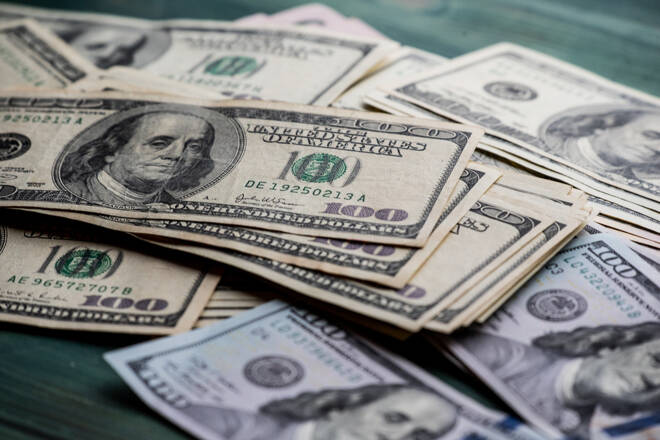Advertisement
Advertisement
U.S. Dollar Weakens Against Basket of Peers as Banking Crisis Concerns Ease
By:
US Dollar Index weakens as concerns over banking crisis ease and demand for safe-haven assets decreases.
Key Takeaways
- US dollar falls as concerns over banking crisis ease
- Japanese yen rebounds strongly due to end-of-year flows
- Euro and sterling gain against the dollar
- Market remains cautious on the dollar’s prospects
Overview
On Tuesday, the U.S. dollar is edging lower against a basket of major currencies for a second consecutive day as concerns of a full-scale banking crisis eased, reducing demand for safe-haven assets.
The Japanese yen, which is also typically considered a safe-haven currency, rebounded strongly, possibly due to end-of-year flows.
The risk-sensitive Australian and New Zealand Dollars, which are not part of the index, also rose, with the Aussie receiving an additional boost from better-than-expected retail sales data.
As of 07:21 GMT, June U.S. Dollar Index futures were trading at 102.280, down 0.23%, while on Monday, the Invesco DB US Dollar Index Bullish Fund ETF (UUP) settled at $27.95, down 0.28%.
The greenback fell to 130.505 yen at one point, declining by 0.71% to 130.64, reversing the previous session’s 0.64% gain, which had followed a 15-basis point surge in long-term Treasury yields, the largest in six months.
Japanese Fiscal Year-End Could Prompt Repatriation Flows and Affect USD/JPY Volatility
The 10-year yield remained mostly unchanged in Tokyo trading on Tuesday, hovering around 3.51%.
Bart Wakabayashi, a branch manager at State Street in Tokyo, suggested that the Japanese fiscal year-end may be prompting some repatriation flows, but added that this is likely a one-off situation.
Kristina Clifton, an analyst at Commonwealth Bank of Australia, warned that Japanese banks may seek U.S. dollar funding ahead of Friday, which could make USD/JPY volatile this week.
Elsewhere, the Euro rose by 0.1% to $1.0809, while Sterling increased by 0.23% to $1.2315. The Aussie gained 0.53% to $0.6686, and the kiwi dollar climbed 0.49% to $0.62265.
While the market may be somewhat reassured by regional U.S. lender First Citizens BancShares’ recent agreement to purchase Silicon Valley Bank’s deposits and loans, Wakabayashi cautioned that nobody is taking anything for granted.
He noted that although the dollar is still considered safe and paying interest rates, people are positioning themselves for potential negative outcomes.
Even if the dollar is sold off, he believes any declines will be limited and that it will likely bounce back.
U.S. Dollar Faces Short-Term Weakness as Demand for Safe-Haven Assets Decreases
Based on the this week’s price action, it seems that the U.S. dollar may continue to experience some weakness in the short term, as concerns over a banking crisis ease and demand for safe-haven assets decreases.
The Japanese yen may remain strong due to end-of-year flows and the possibility of repatriation flows, which could make USD/JPY volatile this week.
However, any declines in the U.S. dollar are expected to be limited, and it may bounce back in the near future. Overall, the market seems cautious but not overly pessimistic about the U.S. dollar’s prospects.
For a look at all of today’s economic events, check out our economic calendar.
About the Author
James Hyerczykauthor
James Hyerczyk is a U.S. based seasoned technical analyst and educator with over 40 years of experience in market analysis and trading, specializing in chart patterns and price movement. He is the author of two books on technical analysis and has a background in both futures and stock markets.
Advertisement
